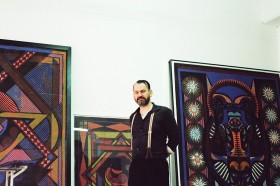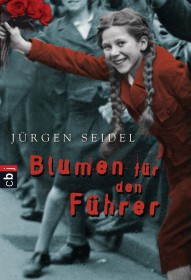The Many Faces of Isaac and Ismael, Part 3
Everyday, hundreds of video clips get produced at our video box that is part of the exhibition “Obedience. An Installation in 15 Rooms by Saskia Boddeke & Peter Greenaway.” This month, we have been particularly taken by the multitude of languages spoken by our visitors who present themselves as Isaac or Ismael:
Lisa Albrecht, responsible for compiling the clips, is since able to introduce herself in a number of languages.

Georg Sadowicz in his atelier
© Jewish Museum Berlin, photo: Kilian Gärtner
I’m meeting Georg Sadowicz in his atelier in Berlin-Hohenschönhausen. The Berlin-based artist was born in Liegnitz, Poland, on the German border. Since April, two of his pieces – precursors to larger work – have been made available to visitors as a limited run in the Jewish Museum Berlin’s art vending machine. They are titled, “The Cantor” and “The Mill.” Sadowicz’s atelier is a mere hundred meters from the grounds of a former Stasi detention center, now a memorial site. The sight of it troubles me, but the unease vanishes as soon as I step into Sadowicz’s atelier. → continue reading

Book cover of the German edition of “Blumen für den Führer” © Verlag cbj
Innumerable publications have appeared on the market about the Nazi period in Germany, as well as a steady stream of new novels, non-fiction, and books for children or young adults that deal with this subject. Among them you will find Jürgen Seidel’s “Flowers for the Führer,” the first part of a trilogy that is, according to the reviews, “a very complex, moving, and exciting novel for young adults about a tragic love story during the era of National Socialism,” and is also “worth reading for adults.” Some of us read the trilogy as part of a reading group dedicated to keeping abreast of children’s and young adult literature about Nazism. And we quickly discovered that instead of discussing the depiction of the Nazi regime and German history, we needed to talk about something else: racism.
→ continue reading

